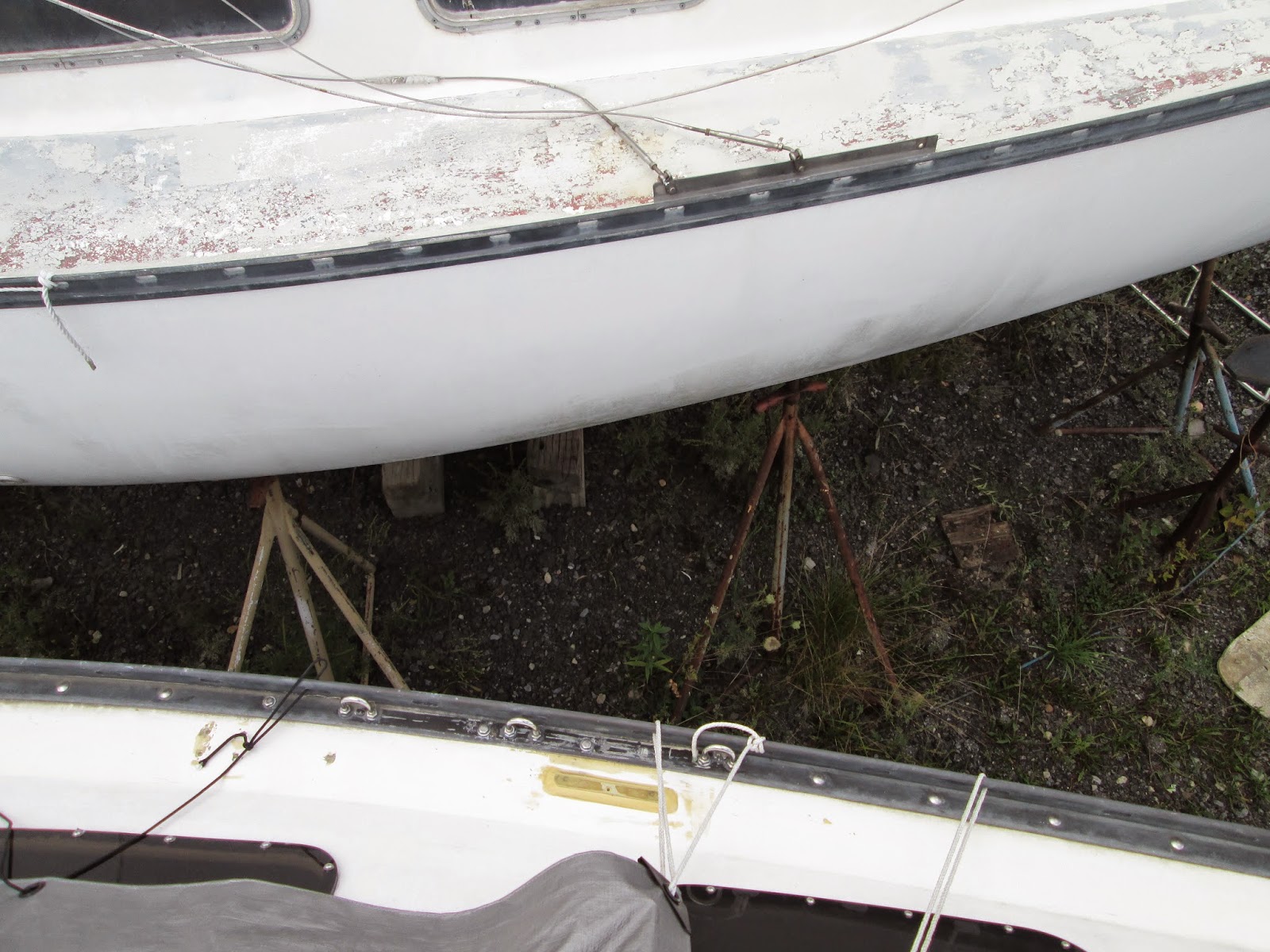18-19 July 2014
I don't think I mentioned this before, so....
The small brass fittings I installed about two seasons ago (here) were really too small. After making a big deal out of putting them in, I decided to replace them with the very idea I have been advising other H25 owners to do for many years.
The original H25 drains were RC Marelon through-hulls straight out the back wall of the cockpit-- necessitating that water either climb up the 5/8" threshold to flow out or else stay in the cockpit pan. I installed the little brass drains in the sole itself, fitted them with 90-degree elbows and though them good enough. After consulting with my friend Roland (SV Moonshine) about his solo Atlantic crossing, I decided too big can never be big enough.
The fix I have been long suggesting for this entails the fitting of a rigid fiberglass tube straight out the very bottom corner of the cockpit pan through the transom. In what has to be the most productive two two-hour work sessions I have ever had on this boat (even in the face of predicted rain), I drilled the holes, bedded these into place, removed the old ones and filled and faired the old holes. I did one one day and one the next, after a full day of work each time. It impressed even myself!
Here's the view from the cockpit. The tubes are 1" inside, 1-1/4" outside diameter, pressed fiberglass, ordered from McMaster-Carr. It was about $21 for one 60-inch piece, which, cut in half, fit perfectly for this application. I deliberately made the cut on an angle, twisting each tube in its hole in order to fill the corner (shorter side inboard). Bedded in 5200 and faired with WEST epoxy and Microlight, they look like they were molded there.
At the transom I allowed the excess length to just stick out and, when the epoxy had dried, cut them shorter with a hacksaw and used the orbital sander to smooth them over. This picture doesn't show it so well, but the factory's installation wasn't symmetrical-- one old hole (filled as of this picture) will appear closer to the new tube than the other side. I just eyeballed the site from above, applied a ruler and made them lead out parallel to the centerline, straight aft from the corners of the cockpit pan.
The green tape covers the HIN. I got some epoxy into it a while ago and decided to preclude any more messing it up.
The other two through-hulls are the Marelon ones I installed for the bilge pumps.
Looking under the cockpit the downward angle and parallel leads are seen clearly. The duct tape is part of one of my 'mooyock' solutions for filling holes. When the old through-hulls were taken out (with hammer and chisel), I taped over the holes in the inside and made up 'communion wafers' of fiberglass to stuff into the voids from the outside with epoxy. Why try to fill a hole that's overhead or angled so that the epoxy will only dribble out?
This isn't a great view of it, but below the tubes is a little floor I installed aft of the low bulkhead in the foreground. This low bulkhead, a little higher than the waterline, will contain water from any rudder-post leaks in the event of a rudder strike (which should be high on the list of any sailor's worst nightmares). A small hole, here seen stained in epoxy, is fitted with a brass tube which will accommodate one of those little rubber transom-drain plugs. It's not the most secure arrangement; but it's much better than having nothing at all in the event of this happening, for which Stephen Dashew says your best scenario is to crack the rudder blade. Any other possibility involves catastrophic damage to the hull-- and, with your average production spade-rudder boat, probably the end of your voyage.
This pic, with the fuel tank in place, shows the upper end of the cockpit-drain tube. With the little brass things in place, there had to be an elbow over the back edge of the tank that seriously complicated attaching fuel hoses and intruded on space for removing the tank. Now this is practically structural-- no worries for stuff in the lazzarette weighting down the drain hoses till they fail or pop off.
(The dark spot on the tank is an old epoxy spill, not a leak or any damage. This tank has been kicking about this boat for very long, getting dusty and spilled-upon, and only now (September) is is finally in its place for good. Of course I've kept all the openings well taped-up!)
* * *












